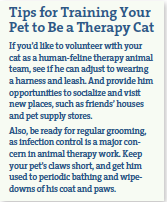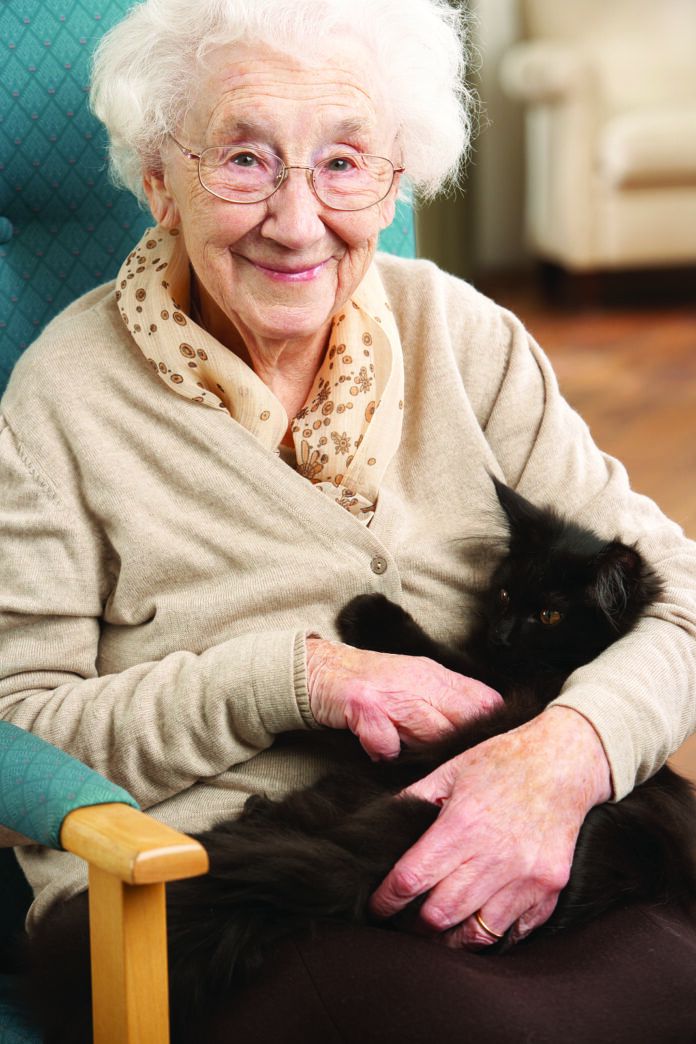Dogs currently make up some 85 to 90 percent of the therapy animals that reduce anxiety and provide comfort for hospital patients, college students awash in stress, and others in institutionalized settings. But new research suggests that some people might get more out of being with a therapy cat. Such people score high on emotionality, a personality trait indicating what you might expect — that they are emotionally charged and have strong reactions to situations that may be tense or worrisome.
To sort out who would be interested in interacting with a therapy cat, researchers at Washington State University collaborated with investigators at a Belgian University called KU Leuven. They surveyed more than 1,400 people at 19 Belgian institutions of higher learning — about 900 students and 500 faculty members and other staff. What stood out was that those with higher emotionality scores were more likely to be responsive to the idea of having cats on campus as therapy animals. Additionally, women appeared more responsive to the idea of bringing in therapy cats than men. And interestingly, people who liked the idea of therapy dogs were more open to therapy cats than people who did not show particular interest in interacting with visiting therapy dogs. In other words, there was some crossover, with affinity for both species.
Prior research has shown empirically that interacting with a therapy dog on campus is better for reducing stress than attending stress-reduction workshops, while still other studies have shown that the effect also works in such places as hospital settings, even reducing the perception of pain in emergency rooms. The results of this new study suggest that because there are so few therapy cats, perhaps some people who would rather be soothed by a cat than a dog in a stress-inducing setting are missing out.
There is an “under representation of cats,” the researchers write in the journal Anthrozoös, owing to “a significant gap in knowledge about the interest in and suitability of cats” in therapeutic interventions to help people feel calmer and better when they are experiencing worry or sadness. They point to prior studies indicating that petting a cat reduces negative mood and that good physical contact with a cat also reduces blood pressure and even reduces the stress hormone cortisol.
From the cat’s point of view
Becoming a “therapist” is not for all cats, and you shouldn’t try to push yours into it. But for go-with-the-flow cats who are outgoing and enjoy novel situations, becoming a therapy animal on a campus or in a hospital, nursing home, or other facility can prove to be terrific environmental enrichment, adding dimension to a life that might otherwise be spent staring at the four walls, so to speak. What are the exact feline skills required? They include the following:
- Reacting positively to strangers.
- Reacting positively to being touched and carried.
- Being able to walk through a facility on leash.
- Being placed on people’s laps without immediately moving away.
- Responding well to the presenceof a dog. (Therapy cats are likelyto encounter therapy dogs in their work.)
- Not minding being transported in a carrier by car to the facilities visited.
How to partner with your cat as a therapy team
It’s not just your cat who has to know how to behave in a therapeutic situation. It’s also you. You have to be able to respond well to various happenings and be able to manage and advocate for your pet.
One organization that registers human-cat teams is Pet Partners, a national 





